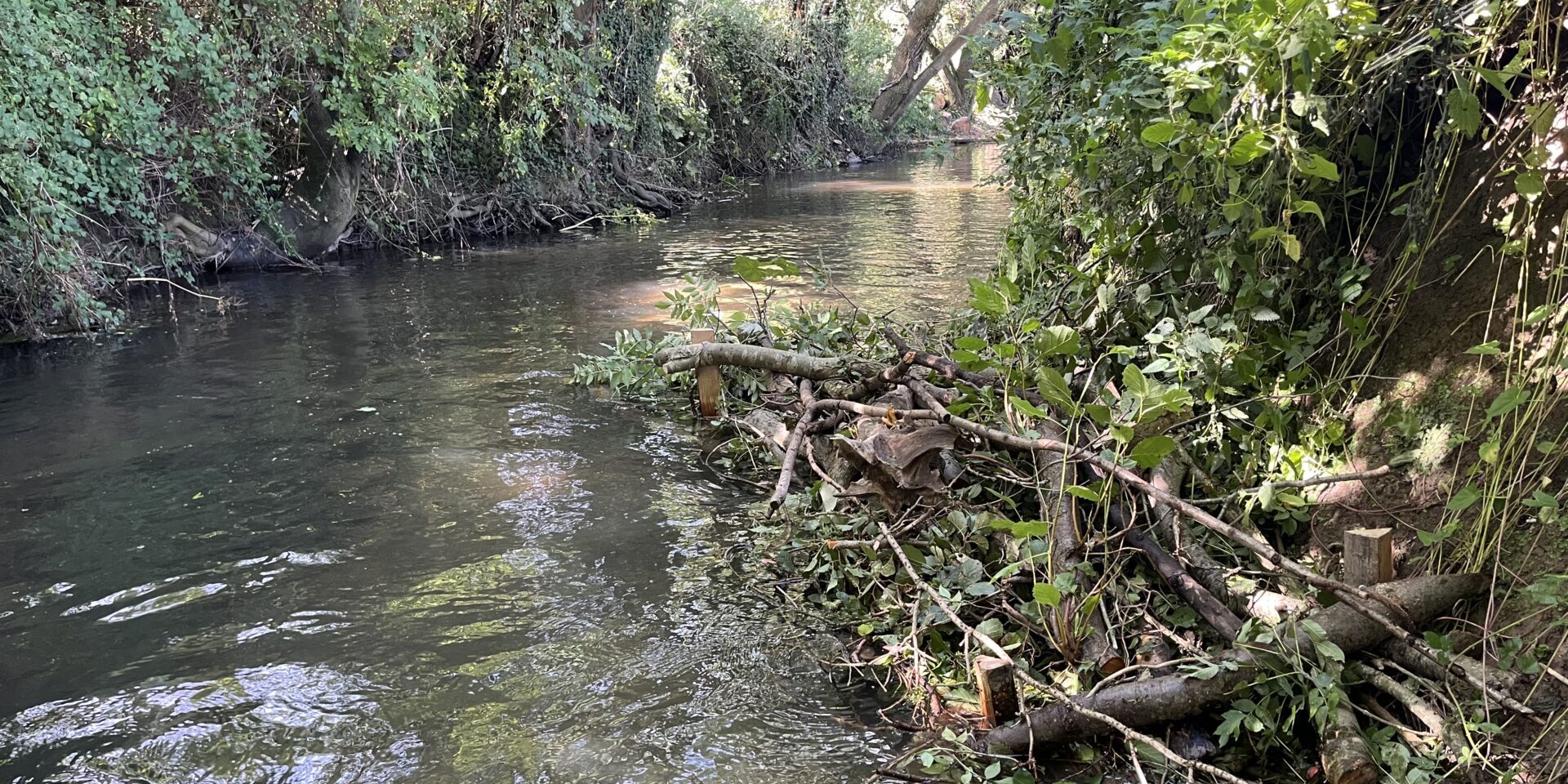This September BART undertook a river restoration project on a section of the Little Avon at Middle Mill in which nine complex woody material structures were built along a 150m stretch of the river. This project was made possible with funding from the Environment Agency Fisheries Improvement Programme, and the Berkeley Syndicate.
The plans were agreed following on from a river walkover with members of the Syndicate in 2024 as a key means to sustainably manage and restore the river for wild fish. Currently, the Little Avon only achieves a moderate ecological rating under the Water Framework Directive largely due to diffuse and point source phosphate pollution and poor macrophyte and photobenthos status. During initial surveys and walkovers, it was determined that the overly straightened and artificially simplistic section of river would benefit from input of complex woody structures.

By introducing woody structures along the riverbank, we are able to ‘pinch’ the channel in strategic locations to increase the depth of flow, encourage natural river processes, create diverse in-stream habitats and provide refuge areas for juvenile fish. All of this helps to increase the river’s resilience to climate change even in low flow scenarios. By concentrating and increasing the flow adjacent to the structures, natural patterns of scour and deposition are encouraged allowing gravels to be exposed and washed clean providing habitat for many invertebrates, river plants and spawning fish such as brown trout.

With thanks to volunteers from the Berkeley Fishing Syndicate and a Berkeley Estate, BART staff spent three days in the river building the structures. Working with a contractor to selectively fell material from the site, team members packed woody brash into the river adjacent to the bank to create roughly wedge-shaped designs, securing them in place with aged chestnut stakes. During higher flow events, these structures have already overtopped with water and begun to fill with suspended sediment that is dropped from the water as it is slowed down as it passes through the structure. Over time bankside vegetation will begin to grow from within the structure as it becomes an extension of the riverbank continuing to help promote natural river processes and all the habitat diversity benefits associated with these. Additionally, several pinned trees were installed for this project. To do this, a contractor cut a bankside tree was selectively felled to allow light to penetrate the channel, then trimmed and placed within the channel where it will allow for variation of scour and therefore greater habitat diversity than before. Pinned trees are another means by which we can restore complexity to river habitats and mimic what naturally occurs to bankside trees.
We would like to thank all our funders, hardworking volunteers and the Berkeley Fishing Syndicate for their help making this project possible and their commitment to improving our rivers for nature!









